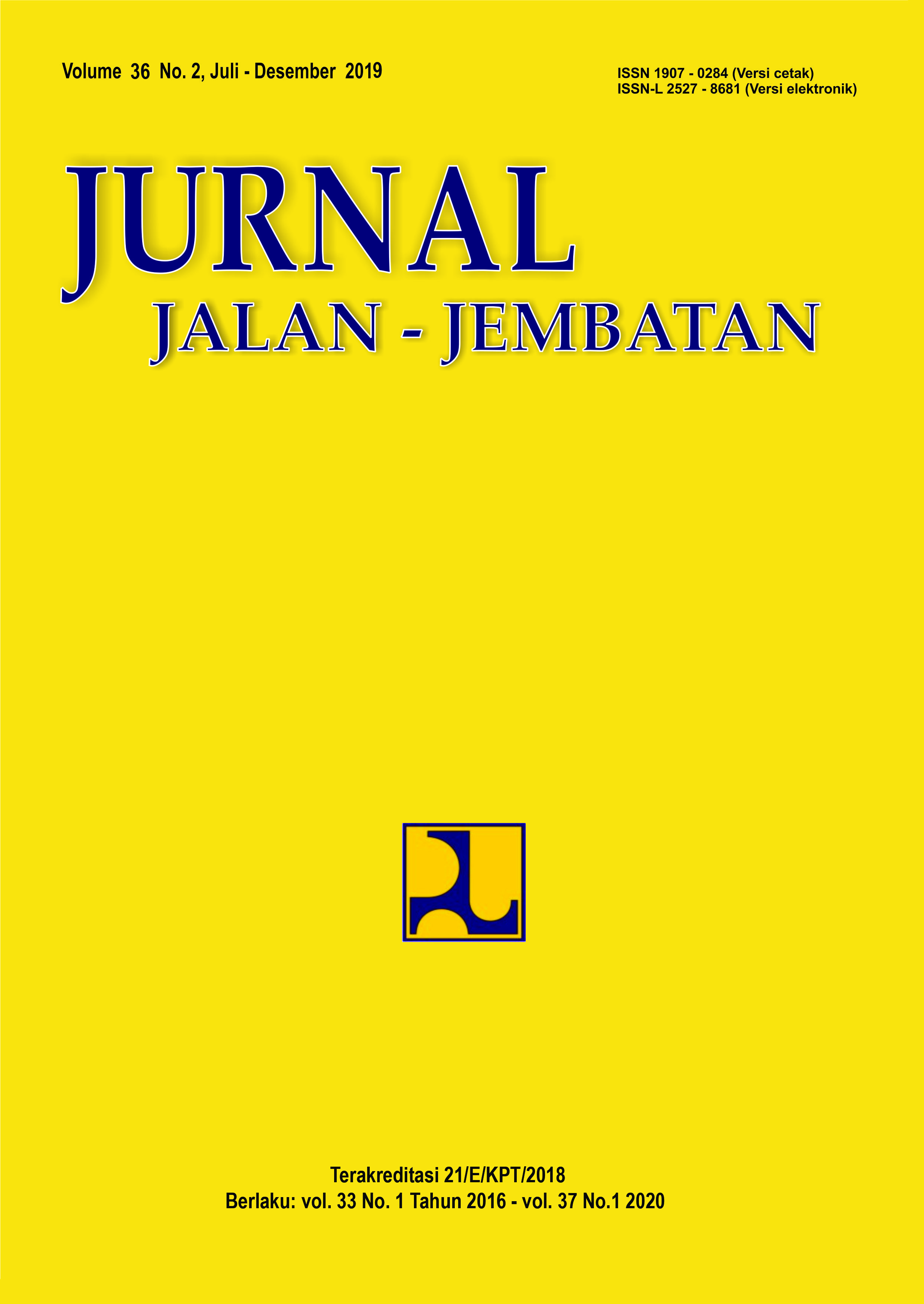Indonesia
Main Article Content
Abstract
ABSTRACT
In many design practices, assumptions that are used in retrofitting concrete structural elements often ignore the condition of initial load. The concrete structural elements which are loaded by the existing load causing initial strain on the existing cross-section before retrofit is applied. This research will study this parameter in the non-linear section analysis of concrete cross-sections retrofitted by concrete jacketing. A hollow column cross-section is examined as an example, wherein the parameter of initial load considered in two conditions which are above and below the yield point of existing section. The non-linear section analysis was performed by developing a computer package program created in Matlab language code with a fiber section approach to obtain the moment-curvature relationship which is obtained by achieving a force equilibrium condition, assuming that the existing cross-section have similar stiffness due to temporary repair applied before jacketing application and a perfect bond between the concrete and the reinforcing steel. The retrofitted cross-section capacity and ductility will be carried out in conditions wherein the initial load approach is calculated compared with the monolithic approach. The object of this research is applied on Cisomang Bridge were located on Cipularang Highway, in which on 2016, the pier of this bridge was cracked because of the foundation shift caused by the accumulation of soil movement of the Cisomang river. The results showed that initial load parameters did not significantly affect cross-sectional capacity when compared with the monolithic approach (≤ 7%).
Key words: concrete jacketing, programming, Matlab, initial load, moment-curvature, bridge pier.
Article Details
Authors who publish in this journal agree to the following terms:
-
Authors retain copyright and grant the journal the right of first publication with the work simultaneously licensed under a Creative Commons Attribution License, which allows others to share the work with acknowledgment of the work's authorship and initial publication in this journal.
-
Authors may enter into additional contractual arrangements for the non-exclusive distribution of the journal's published version of the work (e.g., post it to an institutional repository or publish it in a book), with acknowledgment of its initial publication in this journal.
-
Authors are permitted and encouraged to post their work online (e.g., in institutional repositories or on their website) as it can lead to productive exchanges, as well as earlier and greater citation of the published work.
Each submitted manuscript must be accompanied by a "Manuscript Originality Statement" and a "Copyright Transfer Statement".

